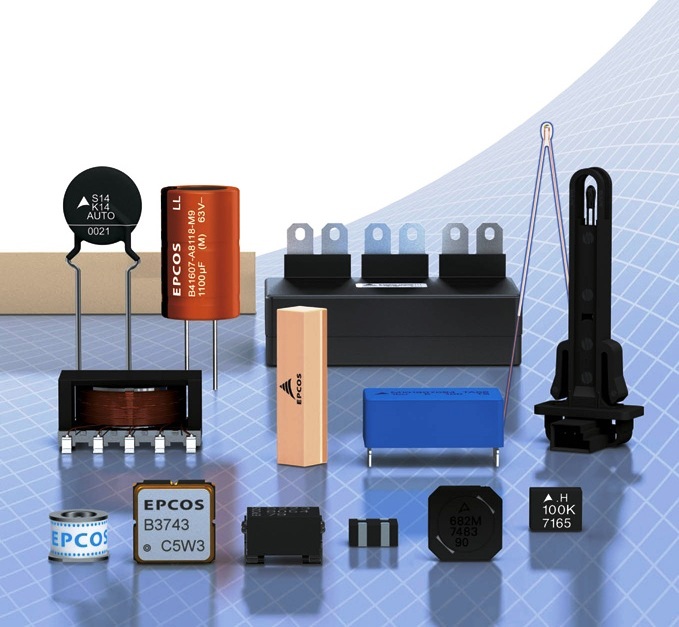Magazin «Modern Electronics» №5, 2006
Authors: А.Kunevich, PhD in physics and mathematics , А. Maximov
This article gives an analysis of power and powder ferrites materials and shows electromagnetic parameters of the most popular foreign trademarks in Russia. Tables of russian and import materials correspondence represented in this article make the development of new products easier. A special attention is drawn to advantages of powder Fe- and Al-based materials using.
At present moment the power electronics market is characterized by a steady growth.The development of semiconductor base imposes new, tougher requirements to the quality of the soft magnetic materials used in power modules. For a long time, the lack of industrial production of modern domestic power materials made developers to use old-fashion materials M2500НМС1 and M2500НМС2, as well as general purpose materials M1500НМ3, M2000НМ, M1000НН in energy converters produced in Russia. This situation adversely affected the performance of power devices.
Currently, the small but ever-growing power ferrites market is represented by a wide range of products from both world-famous brands and little-known Chinese companies.
Modern magnetic materials include power ferrites with a high saturation induction value (up to 0.5 T), designed for operation in converters with a frequency up to 1 MHz, as well as magnetic powder materials with an extremely high saturation induction value.
Ferrite materials
These materials are represented by a large quantity of forms and are produced for power value from tenths of Watt to several kiloWatts.
Table 1. Parameters of popular power ferrite trademarks

*At temperature: 25°С/100°С
Electromagnetic parameters of the most frequently used ferrite series are shown in the table 1. Materials offered by foreign manufacturers are distinguished by a high consumer quality and significantly exceed the outdated russian brands such as M2500НМС1 and M2500НМС2 in electromagnetic parameters (for example, at a reference point at 100 kHz at 100 ° C and B = 0.2 T losses for N87 (Epcos) and 3С90 (Ferroxcube) are approximately 385 mW/cm³, that is approximately 3.5 times less than M2500НМС1 losses value).
A characteristic feature of the domestic power ferrite materials market is the lack of long-term planning of power electronics manufacturers, who have to realize, as a rule, single orders. Not all of power equipment producers have promising production plans and, as a result, not all of them are ready to wait for a delivery of the required cores for more than 2 months. Also one can mention the problems appearing at the stage of experimental design work in obtaining prototypes and small series. Extremely tough competition in the market does not always allow radio electronics manufacturers to use cores with better parameters, but with more expensive price.
In such a case the main interest among electronics producers was focused on Epcos. This company was able to offer not only the optimal quality-price ratio but also created a developed distribution network that allows to purchase a significant part of the required product from warehouses in Russia.
Active work in materials distribution in Russia is also hold by such manufactures as Acme (Taiwan), Cosmo (India), Yeng Tat (Taiwan), Samwha (Korea), Ferroxcube, but their promotion is prevented by small volumes and Russian market's saturation.
A significant market's segment is occupied by russian manufacturers of ferrite materials: ОАО «Ферроприбор» (Saint-Petersburg) и ЗАО НПФ «Феррокерам» (Ukraine) occupy a niche of inexpensive size types which do not have accurate foreign analogues. (for example, Ш6x6, Ш4x8, ПК40x18).
Table 2. Comparative characteristics of modern Epcos materials

*At temperature: 25°С/100°С
Table 3. Analogues of ferrite materials

* М2500НМС1 series has approximately 25% greater losses than M2500НМС2
Recently, the great interest is drawn to new brands of power materials. Among the most popular analogues one can note:
- N97 (Epcos), losses value is 20% lower than losses of base material N87.
- N92 (Epcos), saturation occurs at a current value which is 20% greater than for N87.
- N49 (Epcos), allows to create converters operating at frequencies up to 1 MHz.
Comparative characteristics of these series and their counterparts made by other manufacturers are listed in Tables 2 and 3.
Powder materials
Traditionally, Russian engineers could only use Mo-permalloy-based cores with a permeability from 14 to 250 and a size type from K7x4x3 (rings) to K52x36x14 (rings). Materials characteristics similar to High Flux and Kool Mμ (Table 4) were absent because domestic industry did not produce them. At present, the products of Magnetics and Arnold are also represented on the Russian market (Table 5).
Table 4. High Flux и Kool Mμ materials

Table 5. Magnetics и Arnold materials

The possibility to use cores made of these materials with a diameter up to 78 mm opens up new perspectives for powerful transducers creating. The presence of a dielectric coating facilitates winding and increases the durability of products when operating in adverse climatic conditions.
Cores on the base of Мо-permalloy are characterized by the lowest losses , ideal temporal and thermal stability of magnetic permeability, which makes them indispensable for highly stable precision inductors creating. However, the relatively high cost caused by the high nickel content does not always allow to use them in mass products.
From this point of view, inexpensive materials such as Kool Mμ (Sendust), which repsresent an alloy based on iron and aluminum, are of particular interest for application in power electronics products.
According to economic indicators, the average price of 1 kg of ferrite in high-power converters is about 10 $, cores based on Mo-permalloy - 80$, and Kool M Mμ cores- 30$ .
The presence of size types with a large diameter, relatively low losses in a combination with a large value of saturation induction and affordable prices make cores on the base of material Kool Mμ promising products for applications in power energy converters.




